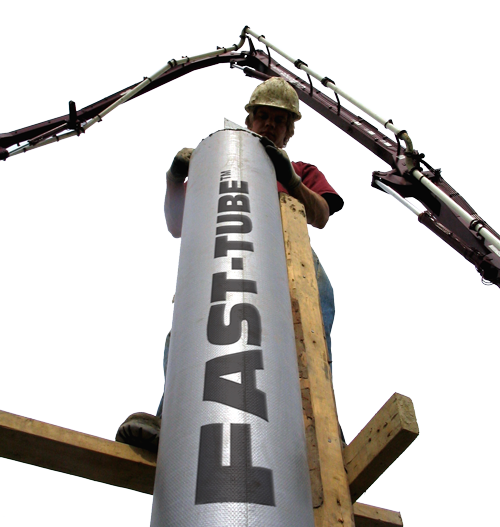
Sunset Builders
Sunset Builders is a cribbing and framing company operating in the Lower Mainland of BC, Canada. Sunset forms and pours foundations and frames structures for Morningstar Homes.
Henry Van Delft, Principal of Sunset, was the first cribber to use production welded Fast-Tube™. When approached by Rick Fearn, Fast-Tube™ inventor, on a sunny day in June 2003, about trying the tube, Henry said, "Hmm... interesting. I like the idea, but will it hold concrete?"
Rick responded, "Well... in theory it should work, I've done the calculations. But there's always a difference between theory and reality. Can we give it a try?"
"Come back on Wednesday with a couple of tubes 9' long. Ron Kautzma, site manager will set them up with you", said Henry.
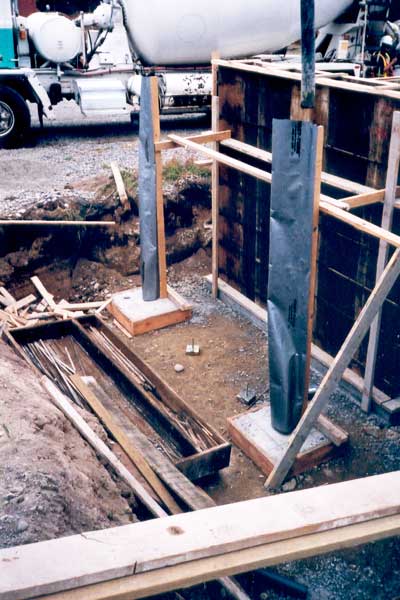
Wednesday Pour
I remember as if it was yesterday. I showed up on site at 9:30 with the Fast-Tubes®. Ron and I stapled the alignment tabs between a couple of 2x4s. Then he then placed the tubes over the rebar in the pre-poured footings and braced them ready for concrete. I was getting nervous. Concrete would soon be here.
I wondered if the tube would fail. I ran the calculations through my head. A 10" diameter tube 9' high, that's a pressure of 9 x 150 pounds per square foot or 1,350 pounds per square foot at the bottom. This means 10/12x1,350 of pressure on half the tube, or about 560 pounds on each side. If I divide that by 12", that's 50 pounds tension on each inch of tube. But tensile strength of the fabric is 140 pounds per inch, so I've got a safety factor of 280%. I should be okay...?
But what about the bottom being completely open? Will there be more pressure on the bottom edge so that it fails there and rips up from the bottom? And what about the weld? Will it hold?
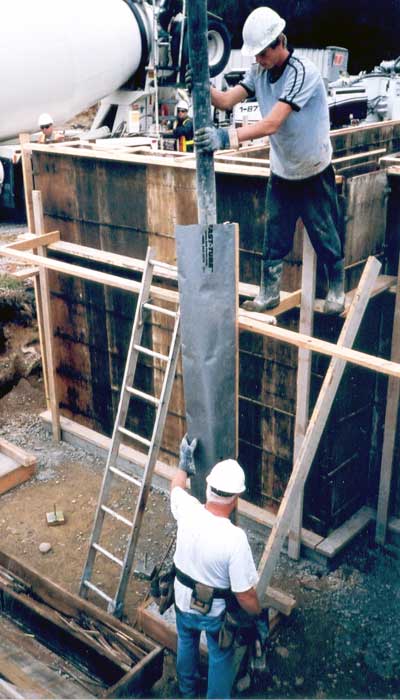
Ready for Concrete?...
At 10:45 AM I heard the low roar of the concrete pump coming down the street. And I could feel the nervous tension building in the pit of my stomach. Ron didn't seem nervous at all. Nor did his assistant Jordan. At 11 o'clock the first concrete truck showed up.
How are we going to stop the concrete from leaking out the base? In theory, if it's a 4" slump, the concrete pressure should make the tube tighten like a drum because of hoop tension, so it should lock itself to the footing. But who knows about theory at a time like this?!
I asked Ron what he thought about leaking at the base? "No problem", he said with confidence. "I'll put one foot at 4:00 oclock and one at 8:00 oclock. And I've got the 2x4s at 12:00 oclock."
Easy to say 'no worry', but that didn't calm me. Jordan, Ron's young helper, was on the pump hose. He started by filling the tubes before the foundation. I guessed that would give time to replace them with cardboard when they failed. Did I say 'fail'. I'm getting ahead of myself.
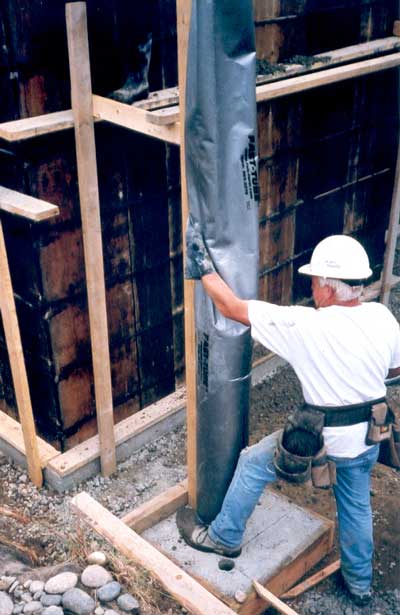
Concete Pour
I saw the pump operator staring at the two tubes, hanging loose in the bracing, moving lightly in the breeze. I could hear him thinking, "There's no possible way those flimsey tubes can hold two tons of concrete."
Jordan directed the hose over the top of the first tube, and lowered the end about half way down the column. His strategy was to reduce the landing speed of the concrete by lowering the drop height...
The Ron placed his feet in position...
And I held my breath...

Success
I could hear concrete dropping to the footing below. I saw some concrete leaking out. Was this failure at the bottom edge?
But then the leak stopped. Ron's foot technique was working! And the tube was filling! Just like it was supposed to. Two feet, then three, then four feet. Wow. Half way. Maybe theory is reality?! Then with confidence increasing, the balance of the tube was filled. Right to the top! No failure!
Ron tapped the sides of the tube with his hands to consolidate the concrete. The tube shook like a bowl of jello.
The second tube filled just the same, without failure.
We had a winner.
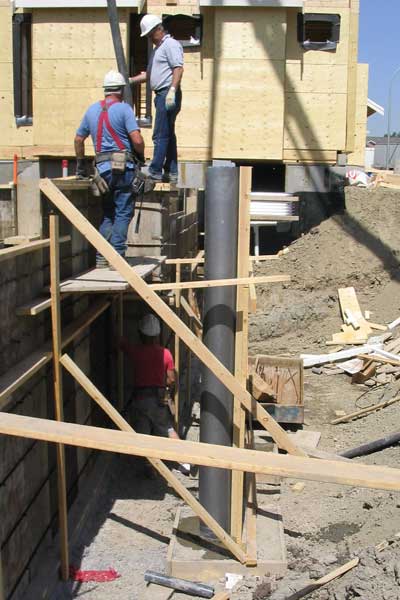
Fast-Tube™ is Born
Henry arrived and said he would check with the developer to see about using Fast-Tube™ on all their projects. "This product make's sense as we don't have to muck around setting up cardboard tubes at the last minute to prevent water damage. And we can cut off what we need and eliminate all waste."
Since 2003, Sunset has used thousands of column forms on their many projects.
And it all started from that day back in June 2003.
Thank you Henry, Ron and crew for supporting Canadian innovation.


